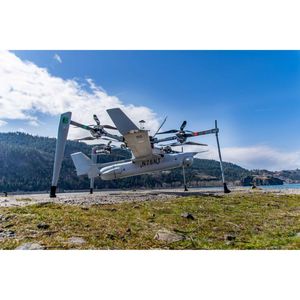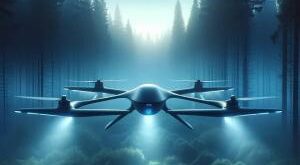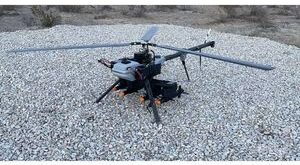Insitu, A Boeing Company, announced its Integrator Vertical Take-off and Landing (VTOL) unmanned aircraft system (UAS) at Navy League’s Sea-Air-Space Exhibition in National Harbor, Maryland.
Integrator VTOL launches vertically on ships or land without sacrificing payload capacity or endurance. The system retains the performance of fixed-wing aircraft, providing the same long range wide-area surveillance capability for extended periods.
Integrator VTOL is uniquely designed to operate as a portable system in tight quarters, such as ship decks, and in challenging maritime conditions with high seas and gusty winds. No stationary launch and recovery equipment is required – providing expeditionary (ship-to-ship, ship-to-land) portability and modularity across both UAS hardware and payloads while minimizing impact to other flight operations.
With greater than 16 hours of endurance carrying 40 lbs. of best-in-class, modular payloads, the unique design offers three-times improvement in range and endurance over hybrid-VTOLs. It also has a significant improvement over tail-sitters in its ability to fly on and off ships in rough seas where ship roll and motion present major issues for tall and narrow base tail-sitter UAS.
“Integrator VTOL is a no-compromise unmanned aircraft system,” said Diane Rose, Insitu president and CEO. “Customers can finally have it all: vertical launch and recovery with industry-leading payload capacity and endurance for their most critical missions, even in the most extreme maritime environments and sea states, without sacrificing valuable transport, deck, or hangar space.”
The system has two parts: FLARES (Flying Launch and Recovery System) developed by Hood Tech, and the Insitu Integrator air vehicle. Requiring no modifications to the aircraft, FLARES performs normal operations at half throttle, allowing significant control authority to withstand gusts, lower density air and higher ship deck motion.
To deploy, FLARES engages Integrator and climbs into the sky. Once it reaches its desired altitude, FLARES dashes forward before releasing Integrator, allowing Integrator to perform its long range, wide-area surveillance mission for extended durations. Once Integrator is released, FLARES returns to a ship’s deck or land to await Integrator’s return.
As Integrator approaches at the end of its mission, FLARES again climbs into the sky with a recovery rope attached and performs Insitu’s well-proven maritime retrieval method. FLARES then lowers Integrator to the ship’s deck or the landing area to complete the mission.
 Unmanned Aerial Vehicle The latest drone news
Unmanned Aerial Vehicle The latest drone news





